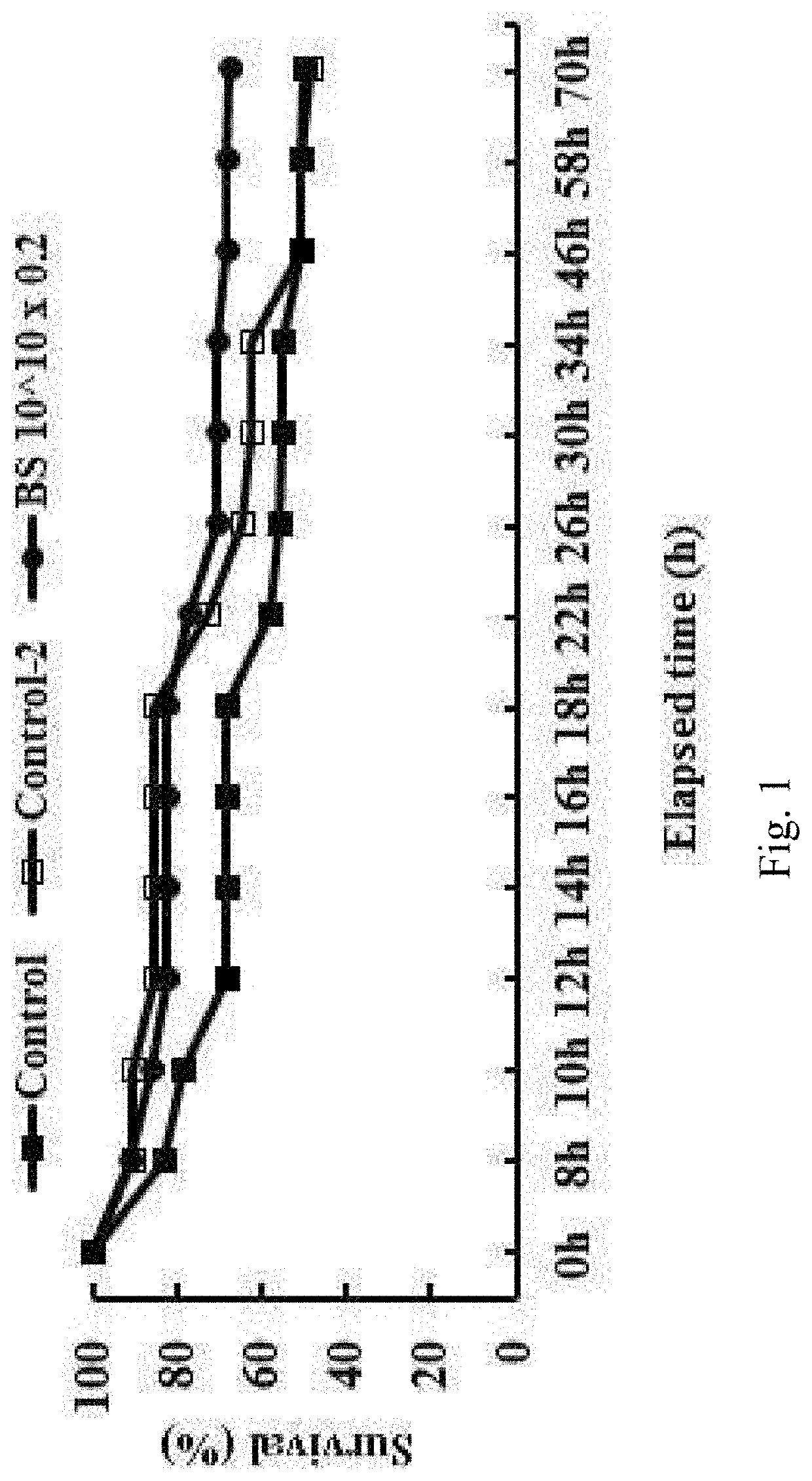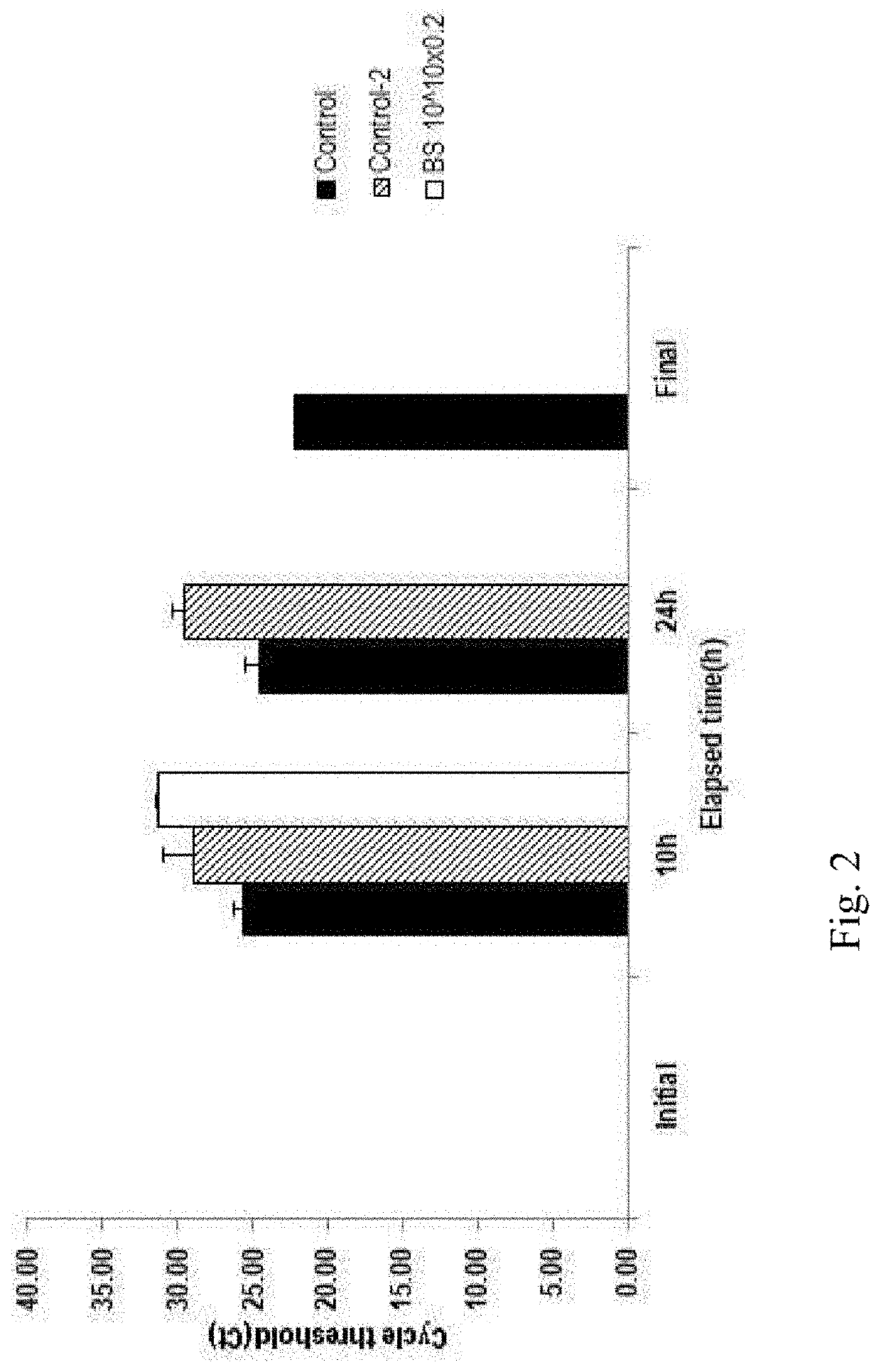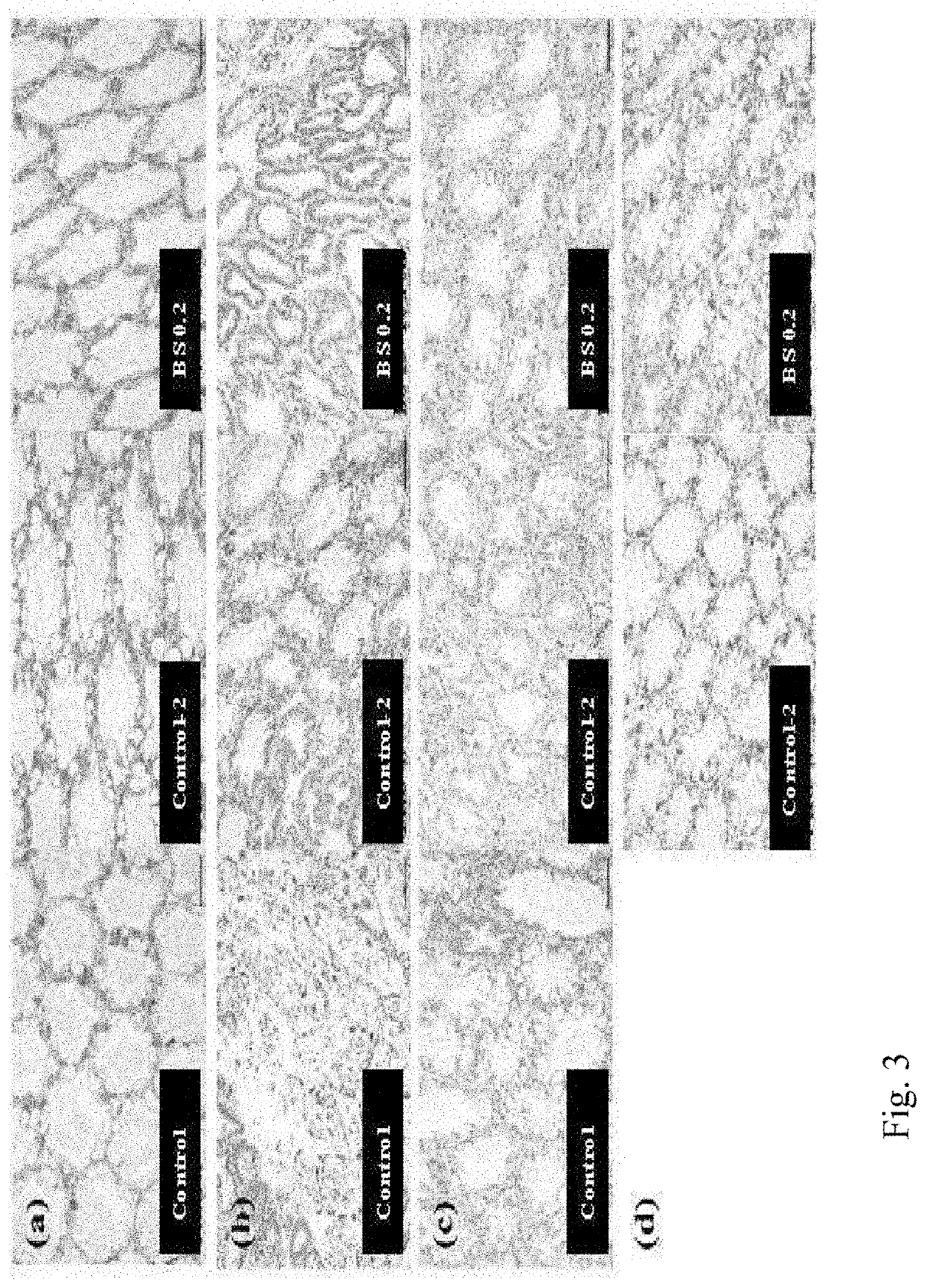A feed composition for preventing or treating acute hepatopancreatic necrosis disease (AHPND) or white spot syndrome (WSS), comprising a Bacillus subtilis strain as an active ingredient
a technology of hepatopancreatic necrosis and feed composition, which is applied in the field of feed composition for preventing or treating acute hepatopancreatic necrosis or white spot syndrome (wss), can solve the problems of limited immunoactivity of feed additives using probiotics, damage to most shrimp markets, and inability to effectively treat existing pathogenic bacteria, etc., to achieve the effect of improving the immunity of shrimp hepatopancreas
- Summary
- Abstract
- Description
- Claims
- Application Information
AI Technical Summary
Benefits of technology
Problems solved by technology
Method used
Image
Examples
preparation example 1
cs with Antibacterial Activity
[0062]To select strains having antibacterial activity against Vibrio parahaemolyticus, which induces shrimp AHPND, a clear zone assay was performed. 0.5% agar (3 mL) and 100 μL of a shaking culture (2.0×109 CFU / mL) of pathogenic bacteria were mixed and seeded on a TSA+ medium to prepare top agar. Cultures of 12 kinds of Bacillus subtilis strains (those possessed by CJ CheilJedang and commercial strains), each in an amount of 10 μL, were dropped on top of the prepared top agar, cultured at 30° C. for 18 hours, and the presence / absence of clear zones was observed. The antibacterial activity of commercially available Bacillus subtilis and complex phage was evaluated together.
TABLE 1Subjects forAntibacterial EvaluationVibrio parahaemolyticusBacillus subtilis 1 (CJBS-01)++++Bacillus subtilis 2 (CJBS-02)+Bacillus subtilis 3 (CJBS-03)−Bacillus subtilis 4 (CJBS-04)−Bacillus subtilis 5 (CJBS-05)+Bacillus subtilis 6 (CJBS-06)−Bacillus subtilis 7 (CJBS-07)−Bacillu...
experimental example 1
ve Effect of Feed Compositions Against AHPND
[0068]1-1. Preparation of Shrimp and Evaluation of Growth Rate
[0069]Thirty whiteleg shrimp were prepared per water tank in a total of 40 water tanks. All of the experimental water tanks were equipped with air stones to maintain dissolved oxygen, and temperature of the water tanks was maintained in a range of 28° C. to 32° C. during the entire period of the experiment. The feed was fed 4 times a day with a limited supply (4% to 12% of fish weight).
[0070]The weight of the shrimp was measured every 2 weeks. The evaluation items and the equations for calculation related to growth rate and feed efficiency are as follows:
Weight Gain (%)=100×(final average body weight−initial average body weight) / average body weight
Feed Conversion Rate (%)=amount of weight gain / amount of feed intake
Daily Specific Growth Rate (% day−1)=100×(loge final body weight−loge initial body weight) / days
[0071]For the distribution of experimental feed, a completely randomized...
experimental example 3
ve Effect of Feed Composition on WSSV
[0139]In order to confirm antiviral activity of the feed compositions including Bacillus subtilis, the attack test was carried out such that the shrimps were attacked by white spot syndrome virus. In the case of the white spot syndrome virus, viruses isolated from whiteleg shrimps (Litopenaues vannamei) infected with WSSV were obtained from domestic farms in 2017 and used for the test. The attack test was carried out as follows: the feed compositions of the Examples were given to shrimp for 6 weeks and then the shrimps having the same weight (average weight: 6.25 g) were placed into 4 replicates with 96 shrimps per group. The inoculation concentration of the virus was 4.1×105 copies / μL, and each shrimp was inoculated intramuscularly with 100 μL of virus using a syringe. The final inoculation concentration per shrimp was 4.1×107 copies / μL.
[0140]After the inoculation, the mortality of shrimp and their swimming states were confirmed. The test feed w...
PUM
| Property | Measurement | Unit |
|---|---|---|
| Mass | aaaaa | aaaaa |
| Fraction | aaaaa | aaaaa |
| Fraction | aaaaa | aaaaa |
Abstract
Description
Claims
Application Information
 Login to view more
Login to view more - R&D Engineer
- R&D Manager
- IP Professional
- Industry Leading Data Capabilities
- Powerful AI technology
- Patent DNA Extraction
Browse by: Latest US Patents, China's latest patents, Technical Efficacy Thesaurus, Application Domain, Technology Topic.
© 2024 PatSnap. All rights reserved.Legal|Privacy policy|Modern Slavery Act Transparency Statement|Sitemap



